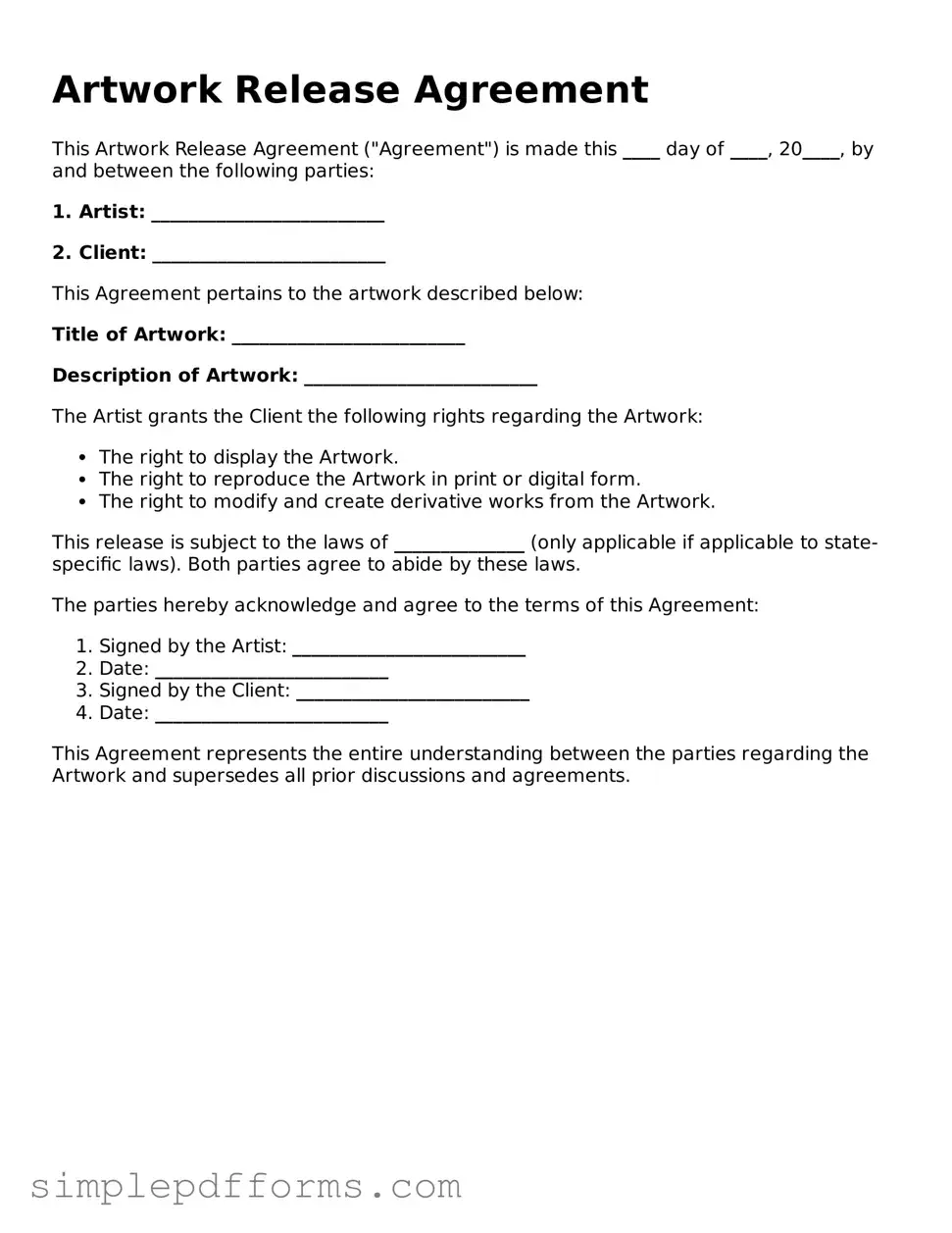Artwork Release Agreement
This Artwork Release Agreement ("Agreement") is made this ____ day of ____, 20____, by and between the following parties:
1. Artist: _________________________
2. Client: _________________________
This Agreement pertains to the artwork described below:
Title of Artwork: _________________________
Description of Artwork: _________________________
The Artist grants the Client the following rights regarding the Artwork:
- The right to display the Artwork.
- The right to reproduce the Artwork in print or digital form.
- The right to modify and create derivative works from the Artwork.
This release is subject to the laws of ______________ (only applicable if applicable to state-specific laws). Both parties agree to abide by these laws.
The parties hereby acknowledge and agree to the terms of this Agreement:
- Signed by the Artist: _________________________
- Date: _________________________
- Signed by the Client: _________________________
- Date: _________________________
This Agreement represents the entire understanding between the parties regarding the Artwork and supersedes all prior discussions and agreements.
